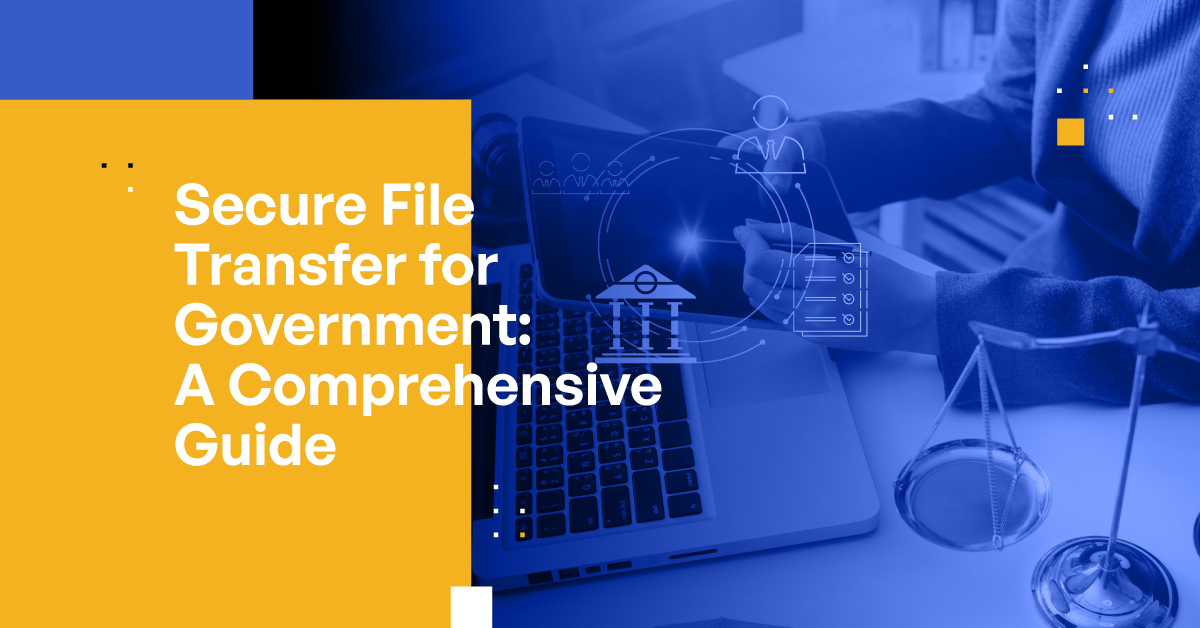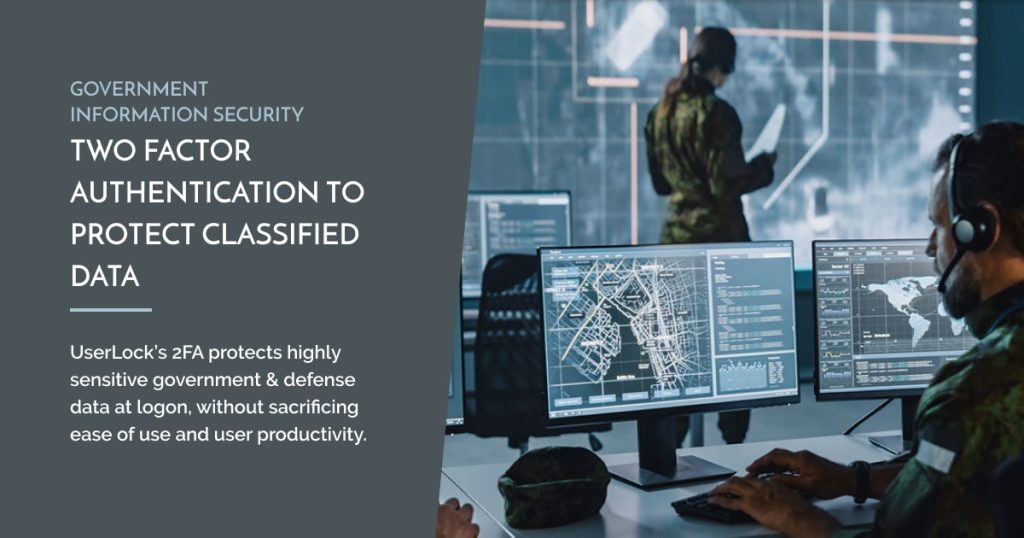Two-factor authentication (2fa) is crucial for securing sensitive information of government agencies. It adds an extra layer of security for accessing data.
Government agencies handle a vast amount of sensitive information, such as citizen records, security information, and government secrets. Therefore, it is crucial to secure such information from unauthorized access. Two-factor authentication (2fa) is an effective security measure that provides an additional layer of protection for data access.
2fa requires the user to provide two forms of identification, which are usually a password and a verification code sent to a device, to access the data. This authentication method significantly reduces the risk of unauthorized access, data breaches, and cyber-attacks. In this article, we will explore the benefits of two-factor authentication (2fa) for government agencies and how it can secure sensitive information.

Credit: www.kiteworks.com
Why 2Fa Is Crucial For Government Agencies
Discussing The Various Types Of Sensitive Data That Government Agencies Possess
Government agencies are tasked with handling a range of sensitive data, including personal information, financial data, and national security intelligence. This data must be handled with utmost care to prevent unauthorized access, theft, or misuse.
Common examples of sensitive information include:
- Personal records such as social security numbers, addresses, and other confidential information
- Financial data such as bank account information, credit card details, and tax information
- National security intelligence, including classified documents, defense-related data, and sensitive diplomatic communications
Explaining How These Data Can Be Exploited By Attackers
Attackers often target government agencies to gain access to sensitive data. In the wrong hands, this information can be used for malicious purposes. Exploitation of data can lead to various dangerous outcomes, namely:
- Identity theft and fraud
- Unauthorized access to sensitive information
- Espionage and sabotage
- Cyber attacks and data breaches
Briefly Discussing The Common Security Measures Undertaken By Government Agencies
To secure sensitive data, government agencies implement various security measures. These measures include:
- Firewalls and access control systems to restrict unauthorized access
- Encryption to protect data in storage and transit
- Intrusion detection and prevention systems to identify and prevent unauthorized access
- Biometric authentication tools to identify authorized personnel
- Regular risk assessments and security audits
- Employee training on information security best practices
Explaining Why 2Fa Is A Potent Solution To The Security Challenges Faced By Government Agencies
Two-factor authentication (2fa) is a powerful security solution for government agencies. With 2fa, users are required to provide two forms of identification to access sensitive data, making it difficult for attackers to access information with a stolen password.
Here’s why 2fa is crucial for government agencies:
- Provides an additional layer of security to protect sensitive data
- Mitigates the risk of password-based attacks such as brute-force cracking or phishing
- Prevents unauthorized access in the event of a data breach
- Helps agencies to comply with industry regulations and security standards
Government agencies handle a range of sensitive data, which must be secured using robust security measures such as 2fa. By implementing two-factor authentication, agencies can protect against common security threats and safeguard against data breaches and unauthorized access.
Implementing 2Fa For Government Agencies
Two-factor authentication (2fa) has become an essential security measure for government agencies to prevent data breaches and protect sensitive information. With hackers becoming more sophisticated and determined, it’s vital for government agencies to implement 2fa to keep their classified and confidential data safe.
Discuss The Various Types Of 2Fa Solutions Available To Government Agencies
With a range of 2fa solutions available for government agencies, it’s essential to choose the right option that suits their requirements. Here are some of the common 2fa solutions used by government agencies:
- Password and token-based authentication
- Smart cards
- Biometric authentication
- Mobile apps and sms
- One-time passwords (otp)
Highlight The Factors That Should Inform The Choice Of 2Fa Solution
Before implementing 2fa, government agencies must consider various factors that affect the choice of 2fa solutions. Here are some factors that should inform the choice of 2fa solutions:
- Security: The solution must provide high-level security that meets the government’s security standards.
- Cost: The cost of the solution must be in the budget allocated by the government agency.
- User-friendliness: The solution must be easy for users to access and use.
- Integration: The solution must integrate with the government agency’s existing systems.
- Maintenance and durability: The solution must be reliable and long-lasting.
Explain The Implementation Process For 2Fa
Implementing 2fa for government agencies requires careful planning and execution. Here’s the process government agencies should follow when implementing 2fa:
- Define the requirements: Clearly identify the requirements and objectives for implementing 2fa.
- Choose the right solution: Select the appropriate 2fa solution based on the identified needs.
- Introduce the solution to users: Conduct training and awareness sessions to educate users on using the 2fa solution.
- Test and pilot: Before launching the 2fa solution, ensure to run testing and pilots to identify, address, and mitigate potential risks and issues.
- Launch the solution: Finally, implement the 2fa solution.
Mention Some Common Implementation Challenges And Ways To Overcome Them
Implementing 2fa for government agencies can be a challenging task. Here are some common implementation challenges and ways to overcome them:
- Resistance to change: Users may resist the new system. To overcome this resistance, create awareness and train users on the benefits and importance of 2fa solutions.
- Integration issues: Integrating the 2fa solution into the existing systems could be a challenge. To address integration issues, work with the it department and the vendor to create an integration plan.
- Complexity: Some 2fa solutions can be complex, and users might find it difficult to use. To mitigate complexity, conduct extensive training to make users comfortable with the new system.
- Maintenance: Government agencies must devote time and resources to maintaining the 2fa solution. It is crucial to create a maintenance plan and update the system regularly.
2fa is an effective security measure for government agencies to secure their sensitive information. By choosing the right 2fa solution, following the implementation process, and addressing implementation challenges, government agencies can implement 2fa with ease.
Best Practices For 2Fa Implementation In Government Agencies
Ensuring Maximum User Acceptance Of 2Fa
When it comes to implementing two-factor authentication (2fa) in government agencies, a key challenge is ensuring maximum user acceptance. To ensure a successful rollout and avoid resistance from users, consider the following best practices:
- Educate users about the benefits of 2fa and the rationale behind its implementation.
- Provide user-friendly training materials and guided assistance during the enrollment process to minimize user effort and confusion.
- Make it easy for users to opt-in and opt-out of 2fa, particularly during the initial implementation phase.
- Consider using multi-factor authentication (mfa) alternatives that are mobile-friendly, such as biometric authentication, to improve user experience.
Common Mistakes To Avoid When Implementing 2Fa
While implementing 2fa can enhance government agency security, there are some common mistakes to avoid to ensure smooth implementation:
- Inadequately preparing for user adoption and reactions, which can lead to ineffective implementation or pushback from users.
- Not testing 2fa in different scenarios or with different user groups before full implementation.
- Not having a clear policy on who can approve or deny a user’s access request to sensitive information.
- Implementing insecure 2fa methods, such as sms-based authentication, which can easily be intercepted by hackers.
Continuous Monitoring And Improvement Of 2Fa Implementation
Deploying 2fa is just the first step in securing government agency information. Ongoing monitoring and improvement is essential for detecting and mitigating vulnerabilities. Consider the following points:
- When designing 2fa policies, incorporate continuous monitoring and auditing to detect any potential threats and inform needed improvements.
- Test and verify all 2fa system components, and conduct regular audits of your authentication processes.
- Develop and maintain a process for regular security assessments to identify and respond to emerging security threats.
- Assign a responsible authority for monitoring and improving the 2fa system.
Emerging Best Practices In 2Fa Implementation For Government Agencies
Due to the growing urgency around information security, emerging best practices are constantly arising in 2fa implementation. The following practices present a good starting point for government agencies:
- Use hardware security tokens as an added layer of security.
- Incorporate a risk-based approach to 2fa implementation by tailoring security requirements to user sensitivity and the type of information accessed.
- Consider blockchain technology for 2fa implementation, as it can provide increased transparency, security, and cost-effectiveness.
- Explore implementing passwordless authentication, which can offer enhanced protection and a more user-friendly experience.
By following best practices, avoiding common mistakes, monitoring and improving implementation, and incorporating emerging technologies, government agencies can protect sensitive information from potential breaches.
Frequently Asked Questions On Two-Factor Authentication (2Fa) For Government Agencies: Securing Sensitive Information
What Is Two-Factor Authentication (2Fa)?
Two-factor authentication (2fa) is an extra layer of security to protect sensitive information by requiring users to provide two pieces of evidence to prove their identity.
Why Is 2Fa Important For Government Agencies?
2fa is important for government agencies because it adds an additional layer of security to sensitive information, reducing the risk of cyberattacks and data breaches.
What Are The Types Of 2Fa Available For Government Agencies?
Types of 2fa include sms-based, app-based, hardware-based, and biometric-based authentication methods. Government agencies should choose a method appropriate to their needs.
Conclusion
In this digital age where hackers and cybercriminals are continuously trying to breach security systems, governments must prioritize the security of sensitive information. Adopting two-factor authentication (2fa) is one of the most effective ways to secure access to sensitive information in government agencies.
2fa acts as a robust security barrier, making it difficult for hackers to penetrate. It combines something the user knows (such as a password) with something the user has (such as a mobile device), making it much harder for unauthorized access.
Moreover, it ensures that only authorized individuals can access sensitive data, thereby protecting against data breaches and other malicious activities. It also adds an extra layer of security in the event an employee’s password is compromised. 2fa is an essential security measure for government agencies to keep their sensitive information safe from cybercriminals.
By adopting this robust security protocol, government agencies can confidently conduct their operations knowing that sensitive data is secure.

